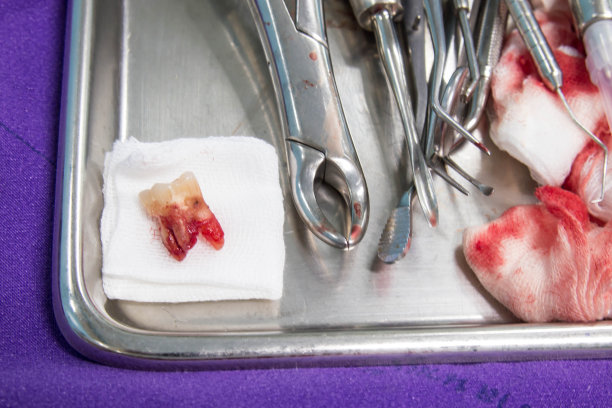Essential Precautions to Ensure a Successful Root Canal Treatment for Optimal Dental Health Care
Summary: Root canal treatment (RCT) can be a lifesaving procedure for infected teeth, but its success relies heavily on essential precautions undertaken by both the patient and the dental professional. This article explores four critical aspects for ensuring the best outcomes: proper diagnosis and treatment planning, effective anesthesia management, maintaining sterile conditions during the procedure, and the importance of post-treatment care. Each section delves into practical measures and considerations that can significantly enhance the effectiveness of RCT and contribute to optimal dental health care. By adhering to these precautions, patients can expect a smoother recovery process and improved long-term dental health.
1. Proper Diagnosis and Treatment Planning

Before initiating a root canal treatment, a thorough diagnosis is crucial. Dentists commonly utilize X-rays to evaluate the condition of the tooth and surrounding tissues. This imaging allows for the identification of infection, abscesses, or other complications that need addressing. A detailed examination ensures that the treatment plan is specifically tailored to the patients needs, which increases the chances of a successful outcome.
Moreover, communication between the dentist and the patient is vital. Dentists should explain the procedure, potential risks, and expected results to the patient clearly. Understanding the process alleviates anxiety and fosters cooperation. When patients are informed, they are more likely to follow pre-treatment instructions, such as avoiding certain foods or medications that might complicate the procedure.
Furthermore, careful consideration of the patients medical history can prevent complications during the procedure. Pre-existing health conditions, allergies, and current medications should all be assessed. This holistic approach to treatment planning not only enhances safety but also supports the likelihood of a successful root canal procedure.
2. Effective Anesthesia Management
Anesthesia plays a fundamental role in root canal treatment, as it ensures patient comfort throughout the procedure. Dentists must choose the appropriate type and dosage of anesthesia based on the patients pain threshold and the treatment complexity. Effective anesthesia minimizes discomfort, allowing the dentist to focus on the technical aspects of the procedure without disruption.
In addition to local anesthesia, dentists may also consider sedation options for particularly anxious patients. Sedative medications help alleviate anxiety and enable patients to relax, which can significantly enhance the overall experience. By assessing individual needs, dentists can implement a tailored approach to anesthesia management.
Post-anesthetic care is also critical. Patients should be informed about potential side effects, like numbness in the mouth, which may affect their ability to eat or speak immediately following the procedure. Clear instructions should be provided on when its safe to resume normal activities, which helps prevent accidental injuries and ensures a smoother recovery.
3. Maintaining Sterile Conditions
Infection control is an essential aspect of any dental procedure, especially during root canal treatment. Maintaining a sterile environment is crucial for minimizing the risk of complications. Dentists should follow strict protocols for sterilization of instruments and use disposable materials whenever possible.
Moreover, implementing comprehensive infection control measures within the dental office ensures not only patient safety but also protects dental staff. Regular training on the best practices for maintaining hygiene can significantly reduce the incidence of postoperative infections.
It is also important for dentists to perform the procedure in a well-organized and equipped environment. Ensuring a clean workspace and having all necessary tools readily available allows for a more efficient procedural flow. This comes together to create an atmosphere that prioritizes both safety and efficacy, which are vital for successful RCT.
4. Importance of Post-Treatment Care
Following a root canal treatment, post-operative care plays a crucial role in the healing process. Patients should receive clear instructions on how to care for the treated tooth, including pain management strategies and dietary recommendations. This information empowers patients to take an active role in their recovery.
Regular follow-up appointments are also essential to monitor the healing process and ensure that the infection is fully addressed. During these visits, dentists can provide additional care or make adjustments if necessary. Emphasizing the importance of these follow-ups can help catch any complications early, which is key for long-term dental health.
Patient education on oral hygiene practices after the procedure is equally important. Maintaining good oral hygiene can promote healing and prevent future complications. Dental professionals should encourage patients to brush and floss properly, as well as to maintain regular check-ups for optimal oral health.
Summary:
Throughout the article, we explored essential precautions necessary for successful root canal treatment. Proper diagnosis and thorough treatment planning ensure customized care, while effective anesthesia management enhances comfort during the procedure. Maintaining sterile conditions protects both patients and dental staff from infections, and diligent post-treatment care ensures a smooth recovery process. By adhering to these principles, patients can expect improved outcomes and enhanced dental health.
This article is compiled by Vickong Dental and the content is for reference only.



